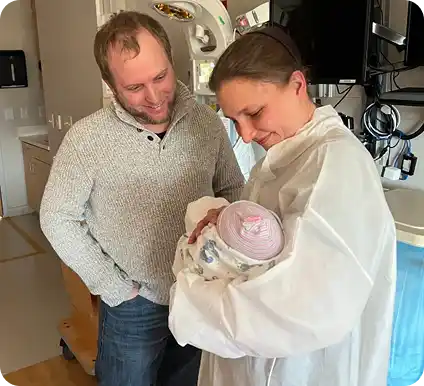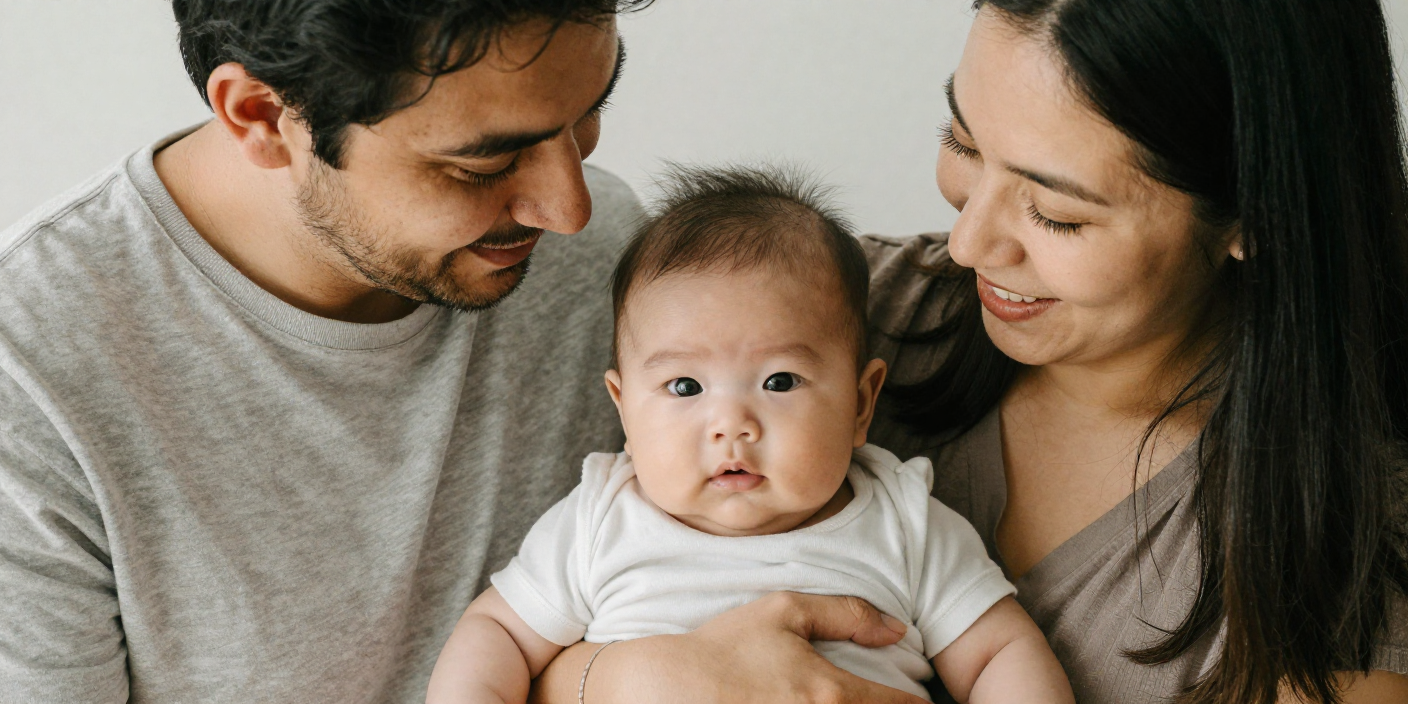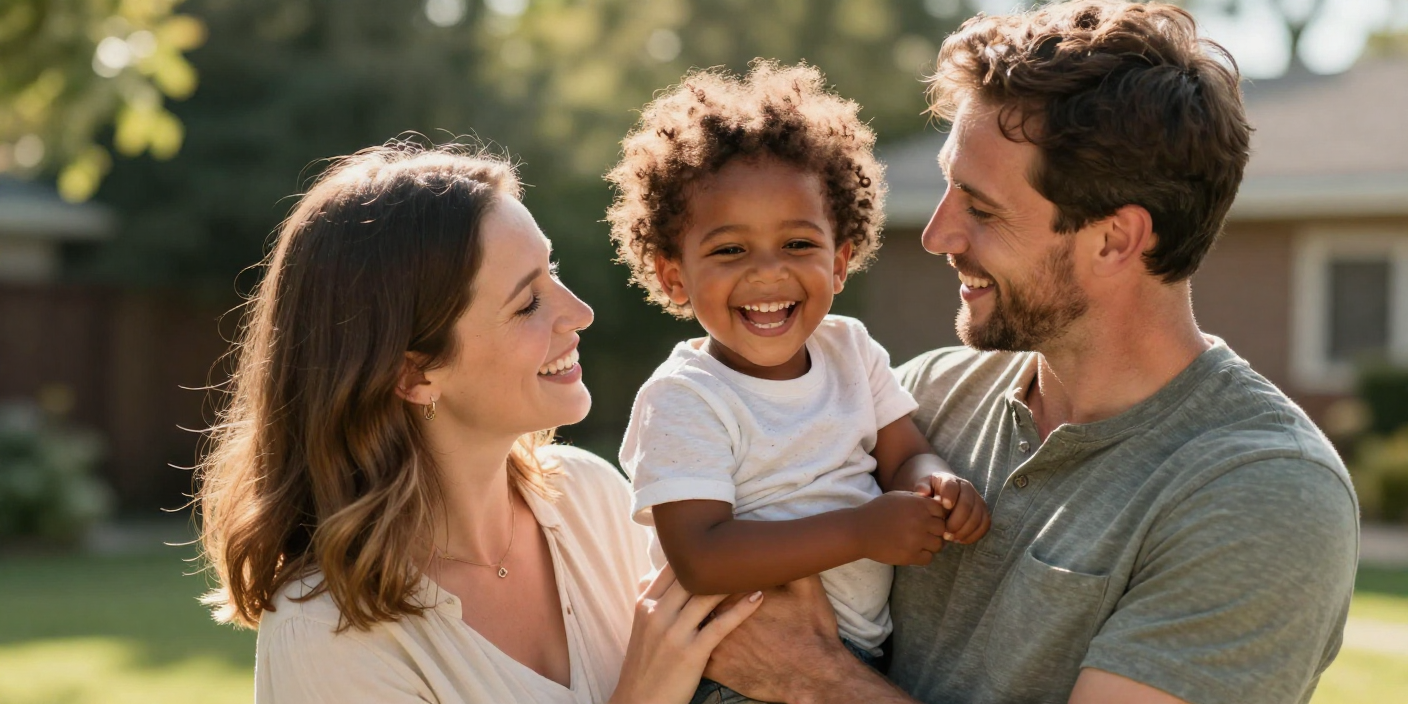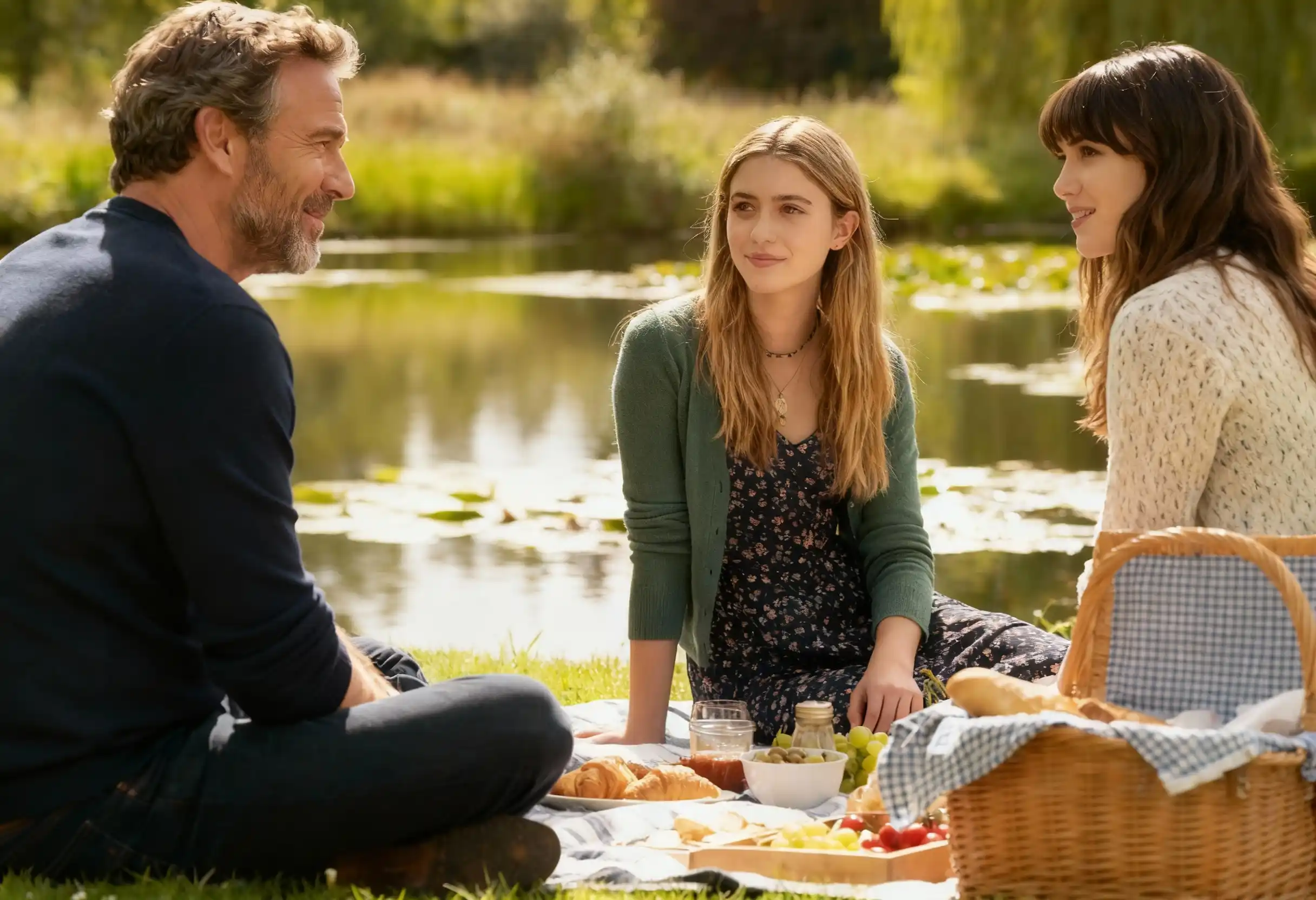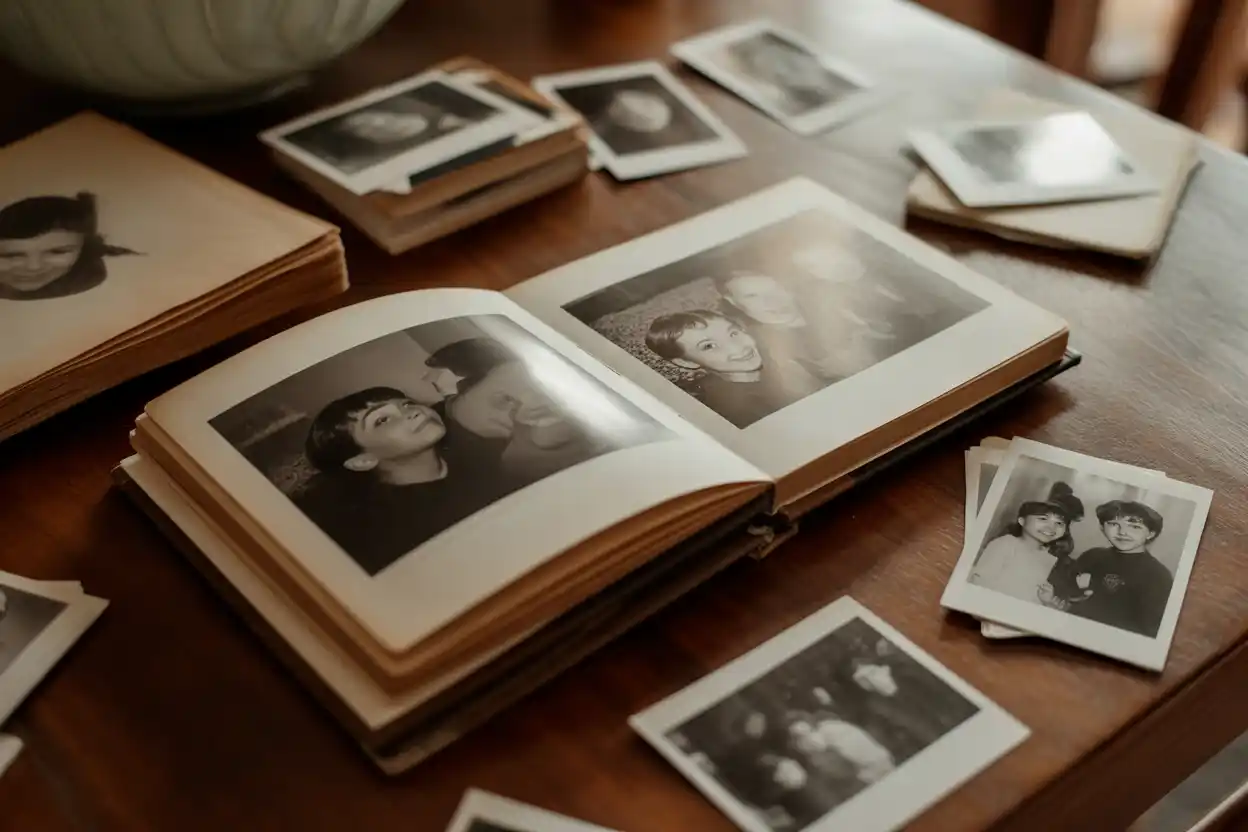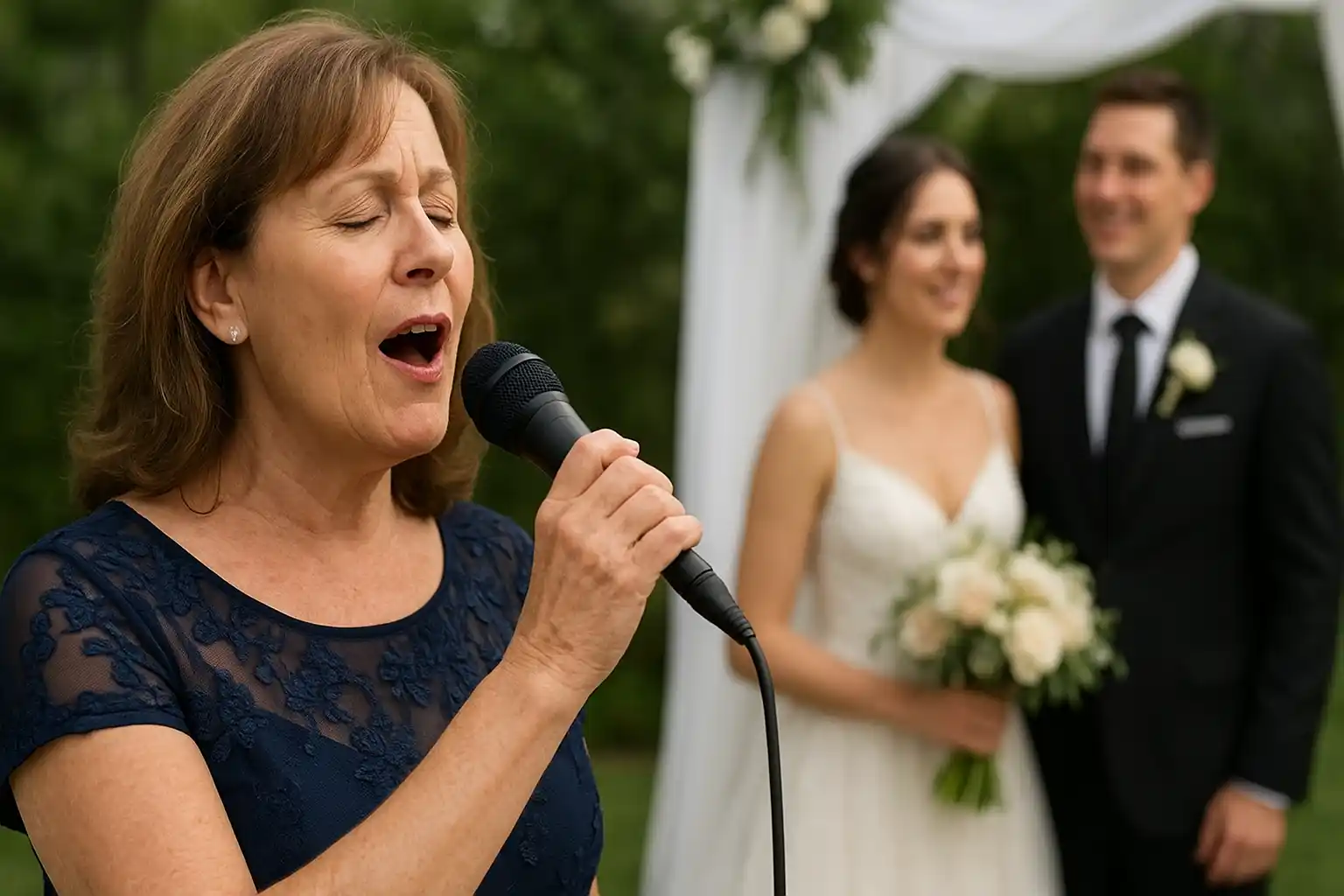An Adoptee's Journey from Hidden Wounds to Healing Through Touch and Truth

When Laurie James discovered she was the third daughter brought into a family already shattered by loss, everything about her childhood suddenly made sense. The emotional distance from her adoptive mother, the chronic anxiety she'd carried for decades, and the desperate need to earn love through perfect behavior all traced back to a family secret that had shaped her entire existence.
This revelation came at a time when many adoptees are finally finding their voices to share complex truths about the adoption experience. Research from the CDC shows that "just 1 percent of births to unwed mothers result in adoption" compared to 9 percent in 1973, meaning fewer adoptees are sharing their stories today. James' discovery of being a replacement child revealed the missing chapters of her family's story that help explain the profound impact of unresolved grief on adoption experiences.
James' transformation from a woman living in survival mode to a somatic relationship coach helping others heal from adoption trauma offers a blueprint for healing. In this episode of Voices of Adoption with hosts Donna Pope and Nathan Gwilliam, James shares the family secret that explained decades of emotional distance, the betrayal that triggered her deepest trauma, and the body-based healing that transformed her life.
A Family Secret - A Lifetime of Pain
The mystery that shaped James' entire childhood began to unravel during a simple car ride with her aging father. After decades of feeling emotionally distant from her adoptive mother despite obvious signs of love, James finally received the missing piece of her family puzzle. She wasn't just an adopted daughter—she was a replacement child, brought into a family that had already endured devastating losses.
Her adoptive mother had previously experienced the stillbirth of a baby girl at eight months, followed by the adoption and subsequent loss of another daughter when the birth mother reclaimed her between four and six months old. By the time James arrived, her adoptive mother was too traumatized to risk full emotional attachment again.
This revelation reframed every interaction James had experienced throughout her childhood. The emotional distance she had interpreted as conditional love suddenly made sense through the lens of a mother too traumatized to risk attachment again. As President Gordon B. Hinckley taught, "too many children walk with pain and fear, in loneliness and despair. Children need sunlight. They need kindness and refreshment and affection."
Research on adoption trauma, particularly Nancy Verrier's seminal work in "The Primal Wound: Understanding the Adopted Child," describes how separation from the birth mother creates a wound that is "physical, emotional, psychological, and spiritual, a wound which causes pain so profound as to have been described as cellular."
Trust - the Deepest Betrayal
Understanding family trauma was only the beginning of James' healing journey. The deepest wound came from her husband of 26 years. James had been clear about her boundaries regarding biological family contact, expressing that she had no interest in finding her birth parents.
However, her husband's decision to ignore this boundary and secretly contact her birth mother created a betrayal that cut straight to the core of her adoption trauma. With two young children and the recent arrival of internet technology, James' husband used her adoption records to locate and contact her birth mother within weeks of getting online access.
For someone whose core wound involved abandonment and lack of control over major life decisions, this boundary violation activated what trauma specialists recognize as abandonment triggers. While she eventually did meet her birth mother and maintained annual contact, the damage to her marriage proved irreparable.
President Gordon B. Hinckley emphasized the importance of trust in families, teaching that "Love is the very essence of family life. Why is it that the children we love become so frequently the targets of our harsh words?"
Attention After Decades of Silence
Following her divorce after 26 years of marriage, James experienced what many would consider a complete physical breakdown. Her body began shutting down in ways that baffled medical professionals—sleeping 16 hours per day, severe anemia, struggling to keep food down, and experiencing mysterious hot patches with dangerously low blood pressure. Two hospitalizations within two weeks failed to identify any clear medical cause.
A therapist friend recognized what doctors had missed—her body was processing decades of unresolved trauma. The introduction to somatic experiencing therapy marked a turning point in James' healing journey. This body-based approach, developed by Dr. Peter Levine, operates on the principle that trauma gets stored in the nervous system and can only be fully resolved by working with the body's natural healing responses.
Unlike traditional talk therapy, which primarily engages the thinking brain, somatic therapy focuses on helping the nervous system complete interrupted threat responses. Peter Levine's foundational principle states that "Trauma is not in the event, but in the nervous system," particularly relevant for adoptees who experienced early separation. His work with attachment disorders demonstrates how SE can help heal children who "never really attached" due to early trauma, addressing the physiological impacts of separation that occur even at birth.
For James, this meant learning to stay present with physical sensations rather than trying to think her way out of discomfort. The transformation was so significant that she eventually became certified as a somatic experiencing practitioner herself. She discovered that her lifelong anxiety stemmed from living in constant nervous system activation—the chronic low-level threat response that had kept her body in survival mode for decades.
Essential Relationships for Healing
Drawing from research by former Surgeon General Vivek Murthy, James identifies three distinct types of relationships that combat loneliness and create authentic belonging. This framework, outlined in Murthy's book "Together: The Healing Power of Human Connection in a Sometimes Lonely World," addresses what he calls the three dimensions of loneliness:
Intimate or emotional loneliness is the longing for a close confidant or intimate partner—someone with whom you share a deep mutual bond of affection and trust. These relationships require the ability to be fully known and accepted, particularly challenging for adoptees who have learned to modify themselves to maintain connection.
Relational or social loneliness is the yearning for quality friendships and social companionship. These connections offer regular social interaction and shared experiences that contribute to overall well-being.
Collective loneliness is the hunger for a network or community of people who share your sense of purpose and interests. Examples include participation in community organizations, membership in religious communities, and connection to cultural or identity-based groups.
James emphasizes that building these relationships requires "tolerable steps"—gradually expanding social connections without overwhelming the nervous system. For adoptees with attachment trauma, this process may take longer but provides a clear pathway forward.
Transforming Trauma Into Mission
James' transformation from isolation to belonging demonstrates that even the deepest adoption wounds can heal with appropriate support. Her journey from chronic anxiety to becoming a trauma-informed coach shows the potential for post-traumatic growth when trauma is properly addressed.
Through her work as a somatic relationship coach, James bridges the gap between lived experience and professional treatment. Her approach combines personal understanding of adoption trauma with evidence-based somatic practices, offering hope to adoptees and others struggling with attachment injuries.
President Russell M. Nelson's teaching on transformation provides spiritual hope: "When we choose to repent, we choose to change! We allow the Savior to transform us into the best version of ourselves." James' transformation reflects this principle of choosing change alongside therapeutic healing.
Resources and Evidence - Hope for Healing
For adoptees and others struggling with attachment trauma, James' story offers both hope and practical direction. Research on the Belonging Network, specifically on adoption trauma validates somatic approaches, with experts noting that "adoption trauma is a relational wound that usually happens early in a child's development, relational somatic therapy can be a particularly effective form of therapy for adoptees" because it addresses the physiological impacts of early separation. Studies show that somatic therapy techniques help process trauma stored at the cellular level, particularly effective for those who experienced early developmental trauma like adoption separation.
Immediate Steps for Healing:
Research somatic experiencing practitioners in your area
Consider trauma-informed therapy approaches that address the body and mind
Connect with adoption-competent therapists who understand unique adoptee challenges
Join support groups for adoptees or those with attachment trauma
Building Your Support Network:
Assess current relationships using Murthy's three-dimension framework
Practice "tolerable steps" in expanding your social circle
Seek communities that align with your values and interests
A Call to Action for Faith Communities
The need for community support becomes urgent when considering changing adoption landscapes. With LDS Family Services adoptions declining "from 600 adoptions in 2007 to just 200 adoptions last year," adoptees and adoptive families increasingly rely on community resources for healing and connection.
President Hinckley emphasized the importance of nurturing environments when he taught: "Every home, regardless of the cost of the house, can provide an environment of love which will be an environment of salvation." This principle extends to faith communities and support networks.
The journey requires courage to face old wounds, patience with the healing process, and commitment to building new patterns of connection. But for those willing to do the work, the transformation from survival to thriving is not just possible—it's inevitable.
Your adoption story, whatever its challenges, contains within it the seeds of your greatest gifts to the world. The question isn't whether healing is possible, but whether you're ready to begin the journey toward the belonging you've always deserved.
As James' transformation demonstrates, every adoptee deserves to know they "were chosen, wanted, and cherished." Remember: Your story matters, your healing matters, and your future matters.
Begin Your Healing Journey?
Visit lauriejames.com or access her free guide to understanding nervous system regulation - Here's her free “Beginner’s Guide to Somatic Healing." Access her complete story on Voices of Adoption with hosts Donna Pope and Nathan Gwilliam. The path to healing starts with a single step. Take that step today.
Listen to Dr. Vivek Murthy's podcast on Loneliness and Connection
Follow or Subscribe to Voices of Adoption on your favorite platform:
Website: VoicesOfAdoption.org
YouTube: @VoicesOf_Adoption
Instagram: @voicesof_adoption
Facebook: Voices of Adoption
LinkedIn: Voices of Adoption
Follow the Hosts:
LinkedIn: Donna-Pope
LinkedIn: NathanGwilliam
Follow Laurie James:
Website: laurieejames.com
LinkedIn: Laurie James
Book: "Sandwiched: A Memoir"
Podcast: Confessions of a Freebird

